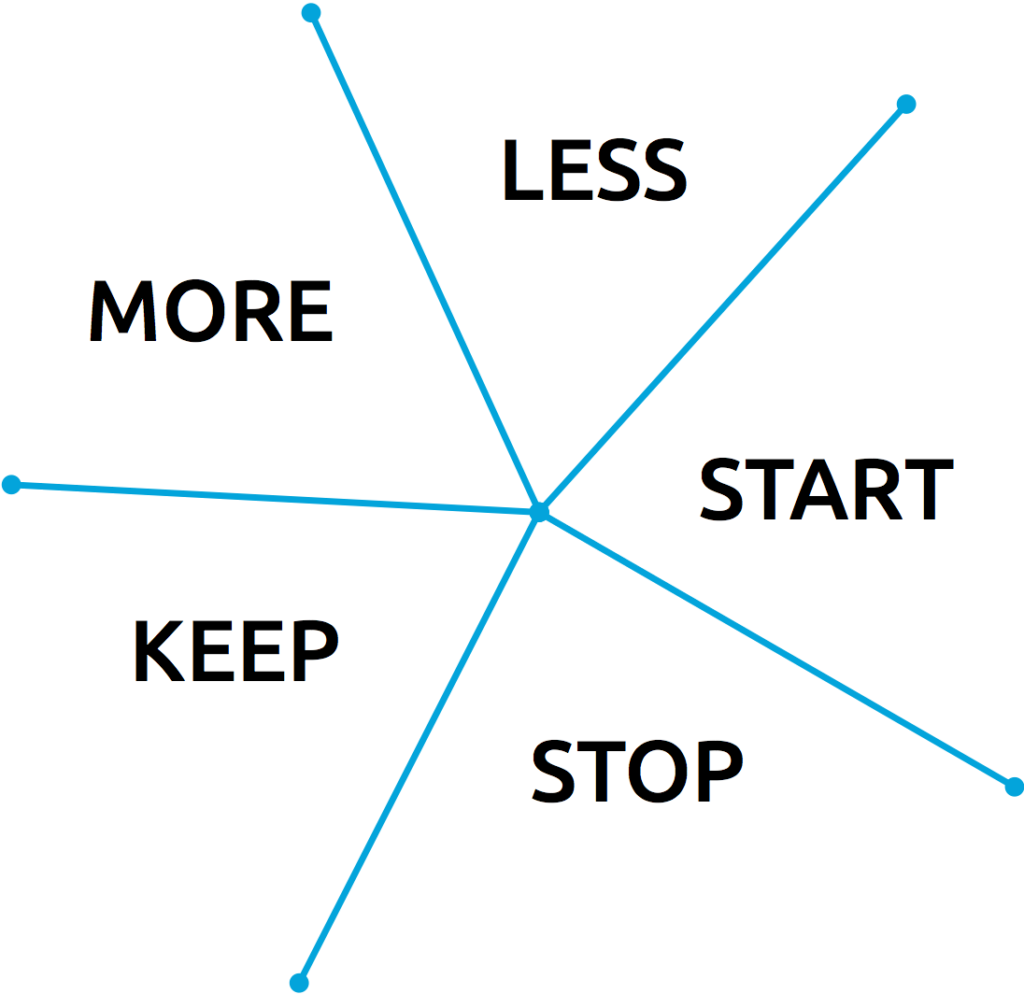Description
What is this technique about
Improving workshops is an ongoing process, regardless of their initial quality. Soliciting feedback from participants is crucial because it demonstrates that their contributions and time are valued, and it enables organisers to optimise the value of future workshops. Anonymous feedback can be particularly helpful since individuals may have ideas they were too hesitant to express during the session or that occurred to them later.
For regularly held sessions like project check-ins or retrospectives, gathering feedback can help organizers build a database of what works, what doesn’t, and how facilitation skills can improve over time. Gathering feedback can be as simple as sending a survey or emailing participants with a few questions, but there are several important considerations to keep in mind.
Where does it come from
The practice of soliciting feedback from individuals or groups has been used in various contexts for centuries. However, the term “feedback” in the modern sense was first used in the field of engineering in the early 20th century. In this context, feedback refers to the process of taking a portion of the output signal from a system and feeding it back into the system as input, allowing for control and regulation (Mayr, 1989).
In the 1950s, the concept of feedback was applied to human communication and learning, with the introduction of “feedback sessions” as a means of providing individuals with constructive criticism to improve their performance. From there, the concept of feedback sessions spread to other fields, such as education, business, and organizational management, as a means of providing individuals with performance evaluations, identifying areas for improvement, and fostering growth and development.
For which purposes it is used (why in your engineering teaching)
Feedback sessions are used to improve the performance of workshops and to better achieve goals.
How to use it
Before gathering feedback from workshop attendees, there are numerous options to consider. To begin, it’s essential to establish clear outcomes-based goals for the workshop to determine whether they were achieved. If the objective was to enhance communication or team cohesion, gathering feedback from participants is an excellent place to start.
As a facilitator, it’s also crucial to learn the following information:
- Were all attendees able to add value?
- Did each attendee contribute or receive sufficient value to justify their attendance?
- Did participants perceive the workshop to be valuable, even if it technically was not?
It’s also necessary to view feedback as data, which can help determine the format for receiving, storing, and analysing it. For instance, if the workshop is held regularly, maintaining consistency in some of the questions asked can help detect trends. If one of the performance objectives is around facilitation, collecting data can provide evidence of improvements over time.
Consider the pros and cons of different feedback options before choosing the most appropriate approach. Think also about whether the feedback will be collected publicly or anonymously with a questionnaire, as public feedback may be biased but questionnaires take more time.
One simple method is to make a short flashing light reflexion with the questions “I wish?” and “I liked”. Or the five-finger-method and its five questions can be used (Qualitäts- und Unterstützungsagentur, 2023):
- Thumb: What was great?
- Index finger: What did I learn?
- Middle finger: What can be improved?
- Ring finger: What do I take away (positive and negative)?
- Little finger: What did I miss out on?
- Palm: What else would I like to say/ What do I wish for?/ Further suggestions?
A simple method for doing a retrospective on a team is the “starfish method”. Here, participants are asked:
- What should be done “more”?
- What should be done “less”?
- What should be “started”, which was not done before?
- What should be “stopped“, because it does not add value?
- What thing should be “keep”ed, because they are good practise?

How to implement this techniques online
- Decide on which type of feedback should be collected.
- Decide on anonymous or public feedback.
- Decide on oral only or written feedback.
- If you decided for written feedback, prepare a white board with the questions you want to ask.
During application, i.e., while giving the session
- Explain the attendees, which kind of feedback you like to have and present the feedback questions to them.
- Give the participants a certain amount of time to reflect, e.g. two minutes. If you decided for written feedback, give the participants extra time (e.g. five minutes in total) to write their feedback on digital sticky notes. Ensure that everybody has finished writing.
- Let the participants give their feed one after another. If you decided for written feedback, let each participant pin their sticky notes and let them explain, what’s written down.
Follow-up, about what to do after the session
- Evaluate the feedback against your goals.
- Store the feedback, if you have it written down.
Examples and/or testimonials
Example on Five-Finger Feedback: https://www.youtube.com/watch?v=X3ZIS3MnhrM
Example on Starfish-Retrospective: https://www.youtube.com/watch?v=0EibzNWzUc8
Tools needed
You will need a platform to share screens and communicate with the participants, such as: MS Teams, Zoom or similar.
You will also need a white board solution with digital sticky dots such as Miro or Mural:
- Zoom
- MS Teams
- Miro
- Mural
- Timer (phone, watch, computer)
Resources
Links
Retromat. (2023). Iteration Retro Event Experiment. Available at: https://retromat.org/en/?id=46-78-51-13-101
Papers
Mayr, O. (1989): Authority, liberty, & automatic machinery in early modern Europe. Johns Hopkins University Press. ISBN 978-0-8018-3939-9.
Qualitäts- und Unterstützungsagentur – Landesinstitut für Schule (QUA-LiS NRW), D-59494 Soest. Methodensammlung. 027 Fünf-Finger-Rückmeldung. Online unter http://www.schulentwicklung.nrw.de/methodensammlung/